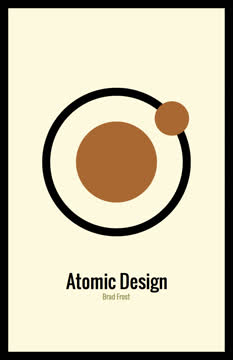Key Takeaways
1. Mobile First: Embrace the Mobile Revolution for Growth and Innovation
"Websites and applications should be designed and built for mobile first."
Mobile is exploding. The rapid growth of mobile internet usage presents an unprecedented opportunity for businesses and developers. Consider these statistics:
- Smartphones outshipped PCs two years earlier than predicted
- Mobile web traffic grew 600% in one year
- By 2013, mobile phones are expected to be the most common web access devices worldwide
Mobile first unlocks potential. Designing for mobile first forces you to focus on core functionality and user needs. This approach often leads to innovative solutions that can improve the overall user experience across all platforms. Companies like Google, Facebook, and Adobe are already adopting this philosophy, recognizing its potential to drive growth and innovation.
2. Constraints Drive Focus: Mobile Limitations Lead to Better Design
"Embracing constraints (rather than fighting them) will ultimately get you to better designs."
Screen size matters. Mobile devices typically have 80% less screen space than desktops. This constraint forces designers to prioritize content and features, leading to more focused and user-centric experiences. For example:
- Southwest Airlines' mobile app focuses on core functions: booking travel, checking in, and flight status
- Flickr's mobile experience reduces 60+ navigation options to just six key actions
Performance is crucial. Mobile networks can be slow and unreliable, pushing designers to optimize for speed and efficiency. This focus on performance benefits users across all platforms, resulting in faster, more streamlined experiences.
3. Leverage Mobile Capabilities: Innovate with Device-Specific Features
"Mobile capabilities allow you to reinvent ways to meet people's needs using exciting new tools that are now at your disposal."
Unique mobile features enable innovation. Modern smartphones offer a range of capabilities that can transform user experiences:
- Location detection
- Device orientation/accelerometer
- Touch interfaces
- Cameras and microphones
- Near Field Communication (NFC)
Real-world examples showcase potential. Applications like Nearest Tube demonstrate how mobile capabilities can reinvent simple tasks. By combining location data, digital compass, and camera feed, users can easily find nearby subway stations through an augmented reality interface.
4. Content Over Navigation: Prioritize Information in Mobile Interfaces
"As a general rule, content takes precedence over navigation on mobile."
Mobile users seek immediate answers. Design mobile interfaces that prioritize content over extensive navigation options. Examples of effective content-first designs:
- YouTube and ESPN mobile sites prominently display timely content
- Reduce navigation bars and menus to a single action or button
Enable exploration without clutter. Provide ways for users to discover additional content without overwhelming the interface:
- Use anchor links to jump to navigation options at the bottom of the page
- Implement contextual navigation for related content
- Utilize responsive "hamburger" menus for additional options
5. Touch-Optimized Interfaces: Design for Fingers, Not Mouse Pointers
"Human fingers are imprecise pointing instruments: they lack the pixel-level accuracy of a mouse pointer; they come in different sizes; and it's not uncommon for them to slip or move around as we interact with our devices."
Size matters for touch targets. Follow these guidelines for touch-friendly interfaces:
- Minimum touch target size: 7-10mm (about 44-57 pixels)
- Ideal spacing between targets: 2mm (about 11 pixels)
- Make visual representations 50-100% of the actual touch target size
Consider thumb reach. Design layouts that accommodate one-handed use:
- Place primary actions in the middle or bottom of the screen
- Arrange actions from left to right for right-handed users
- Position destructive actions (e.g., delete) in harder-to-reach areas
6. Rethink Input Methods: Simplify Data Entry on Mobile Devices
"Mobile devices are with us all the time. So whenever or wherever inspiration strikes we can speak our mind, share, or just contribute online."
Optimize forms for mobile. Use these techniques to simplify data entry:
- Utilize HTML5 input types (e.g., email, url, number) for appropriate keyboards
- Implement input masks to guide users and prevent errors
- Use smart defaults and pre-filled forms when possible
- Consider custom controls like date pickers and spinners for efficiency
Leverage device capabilities. Go beyond traditional form inputs:
- Use location detection for address fields
- Implement camera input for product identification or translation
- Explore voice input and natural language processing
7. Fluid and Responsive Layouts: Adapt to Diverse Screen Sizes and Orientations
"Through the application of fluid layouts, flexible media, CSS3 media queries, and (sometimes) a bit of JavaScript, responsive web design allows you to adapt to devices more significantly."
Embrace flexibility. Design layouts that can adapt to various screen sizes and orientations:
- Use fluid layouts with percentage-based widths
- Implement flexible images and media
- Utilize CSS3 media queries to apply different styles based on device characteristics
Set breakpoints strategically. Define resolution breakpoints where layouts significantly change to optimize for different device classes:
- Consider common device widths (e.g., 320px, 768px, 1024px)
- Adjust layout, typography, and functionality at each breakpoint
8. Device-Specific Experiences: Tailor Interfaces for Unique Usage Contexts
"Devices are different not just because they have different technical capabilities and limitations, but because people use them differently as well."
Consider unique device characteristics. Each device class has distinct attributes:
- User posture (e.g., lean-back TV viewing vs. on-the-go mobile use)
- Primary input method (e.g., remote control, touch, keyboard)
- Average display size
Optimize for context. Design interfaces that cater to specific device experiences:
- Connected TVs: Focus on large, easily readable text and simple navigation
- Tablets: Design for casual, touch-based interaction in various orientations
- Smartphones: Prioritize quick, focused tasks for on-the-go use
9. Reduction as a Strategy: Simplify to Enhance Mobile User Experience
"Across all your mobile layouts, aim for the minimum amount necessary to help people meet their needs whether they're looking up or finding information, exploring and playing, checking in on important updates, or editing and creating content."
Less is more on mobile. Simplify your mobile interfaces by:
- Focusing on core functionality and most important content
- Eliminating unnecessary navigation options
- Streamlining forms and input methods
Benefits of reduction:
- Easier development and maintenance
- Improved user focus and task completion
- Enhanced performance on mobile networks
10. Prepare for Constant Change: Stay Agile in the Ever-Evolving Mobile Landscape
"Welcome to mobile where the only thing you can count on is change."
Embrace uncertainty. The mobile landscape is constantly evolving:
- New devices with varying capabilities are released regularly
- Mobile platforms and partnerships shift frequently
- User behavior and expectations continue to change
Stay adaptable. Develop strategies to remain flexible:
- Focus on design principles rather than specific technologies
- Use progressive enhancement to support a wide range of devices
- Continuously test and iterate on your mobile experiences
- Stay informed about emerging trends and technologies in the mobile space
Last updated:
FAQ
What's "Mobile First" by Luke Wroblewski about?
- Focus on Mobile Design: "Mobile First" emphasizes designing websites and applications with mobile devices as the primary focus, rather than as an afterthought.
- Changing Web Dynamics: The book discusses how the shift towards mobile usage is changing the way we define personal computing and web usage.
- Practical Guidance: It provides practical advice on how to prioritize and innovate in mobile design, leveraging constraints and capabilities of mobile devices.
- Industry Insights: The book includes insights from major companies like Google and Facebook, who are adopting a mobile-first approach.
Why should I read "Mobile First" by Luke Wroblewski?
- Stay Relevant: As mobile usage continues to grow, understanding mobile-first design is crucial for staying relevant in web design and development.
- Improve User Experience: The book offers strategies to enhance user experience by focusing on mobile constraints and capabilities.
- Data-Driven Insights: Luke Wroblewski uses data and real-world examples to back up his arguments, making the book both informative and convincing.
- Actionable Advice: It provides actionable advice that can be immediately applied to improve mobile web experiences.
What are the key takeaways of "Mobile First" by Luke Wroblewski?
- Mobile Growth: Mobile internet usage is growing rapidly, and designing for mobile first prepares you for this shift.
- Focus and Prioritization: Mobile constraints force designers to focus on what truly matters, leading to more efficient and user-friendly designs.
- Innovative Opportunities: Mobile capabilities offer new opportunities for innovation, allowing designers to create unique user experiences.
- Responsive Design: The book emphasizes the importance of responsive design to adapt to various screen sizes and device capabilities.
What are the best quotes from "Mobile First" and what do they mean?
- "Mobile first is a big deal." This quote underscores the importance of prioritizing mobile design in today's digital landscape.
- "Embrace constraints to focus." It highlights how mobile constraints can lead to more focused and effective design solutions.
- "The mobile opportunity in a nutshell." This phrase encapsulates the potential for mobile to enhance user engagement and experience.
- "Designing for mobile first forces you to get there, like it or not." It suggests that mobile-first design compels designers to prioritize and streamline their work.
How does "Mobile First" by Luke Wroblewski define the mobile-first approach?
- Primary Focus on Mobile: The mobile-first approach involves designing for mobile devices as the primary platform, rather than adapting desktop designs for mobile.
- Embrace Constraints: It encourages embracing the constraints of mobile devices, such as smaller screens and slower networks, to create more focused designs.
- Leverage Capabilities: The approach also involves leveraging mobile-specific capabilities, like touch interfaces and location services, to enhance user experience.
- Industry Adoption: The book notes that major companies are adopting this approach, recognizing its importance in the evolving digital landscape.
What practical advice does "Mobile First" offer for mobile web design?
- Prioritize Content: Focus on delivering essential content first, minimizing navigation and other distractions.
- Optimize Performance: Reduce file sizes and HTTP requests to improve loading times on mobile networks.
- Design for Touch: Ensure touch targets are appropriately sized and positioned for easy interaction.
- Responsive Layouts: Use fluid and responsive design techniques to adapt to various screen sizes and orientations.
How does "Mobile First" address the challenges of mobile design?
- Screen Size Constraints: The book discusses how to prioritize content and functionality within the limited screen space of mobile devices.
- Performance Issues: It offers strategies to optimize performance, such as minimizing file sizes and leveraging browser capabilities.
- User Context: The book emphasizes understanding the context in which mobile devices are used, such as location and time, to inform design decisions.
- Device Diversity: It addresses the challenge of designing for a wide range of devices with varying capabilities and screen sizes.
What are the benefits of a mobile-first design approach according to "Mobile First"?
- Growth Opportunities: Designing for mobile first positions you to take advantage of the rapid growth in mobile internet usage.
- Enhanced Focus: Mobile constraints force designers to focus on what truly matters, leading to more efficient and user-friendly designs.
- Innovative Experiences: Mobile capabilities offer new opportunities for innovation, allowing designers to create unique user experiences.
- Cross-Platform Consistency: A mobile-first approach can lead to more consistent and streamlined experiences across different devices.
How does "Mobile First" suggest handling navigation in mobile design?
- Content Over Navigation: Prioritize delivering content first, with navigation options secondary to ensure users get what they need quickly.
- Simplified Menus: Use simplified navigation menus that are easy to access and understand on small screens.
- Contextual Navigation: Provide contextual navigation options that allow users to explore related content without overwhelming them.
- Responsive Adjustments: Adjust navigation elements responsively to fit different screen sizes and orientations.
What role do touch gestures play in "Mobile First" by Luke Wroblewski?
- Direct Interaction: Touch gestures allow for direct interaction with content, making interfaces more intuitive and engaging.
- Common Gestures: The book outlines common touch gestures like tap, swipe, and pinch, and how they can be used in mobile design.
- Natural User Interfaces: It encourages the use of natural user interfaces that align with how people interact with the real world.
- Gesture Discoverability: The book discusses the importance of making gestures discoverable and providing visual cues where necessary.
How does "Mobile First" address input challenges on mobile devices?
- Optimized Labels: Use top-aligned labels and clear instructions to make input fields easy to understand and use.
- Input Types and Attributes: Leverage HTML5 input types and attributes to simplify data entry and improve accuracy.
- Smart Defaults: Implement smart defaults to reduce the amount of input required from users.
- Beyond Typing: Explore alternative input methods like voice, location, and camera to reduce reliance on typing.
What layout strategies does "Mobile First" recommend for mobile web design?
- Fluid and Responsive Layouts: Use fluid and responsive design techniques to adapt to various screen sizes and orientations.
- Meta Viewport Tag: Implement the meta viewport tag to ensure designs are optimized for mobile browsers.
- High-Resolution Images: Provide high-resolution images for devices with high pixel density to maintain visual quality.
- Device Experience Considerations: Consider the unique characteristics of different device experiences when designing layouts.
Review Summary
Mobile First receives mixed reviews, with an average rating of 3.91 out of 5. Readers appreciate its compelling case for mobile-first development and practical insights on user experience. However, some find it outdated and lacking in-depth technical content. The book's strengths lie in its data-driven approach and best practices for mobile design. Critics argue that much of the information is now common knowledge. Despite its age, many still consider it a valuable resource for understanding mobile-first principles and design considerations.
A Book Apart Series Series
Similar Books










Download PDF
Download EPUB
.epub digital book format is ideal for reading ebooks on phones, tablets, and e-readers.







